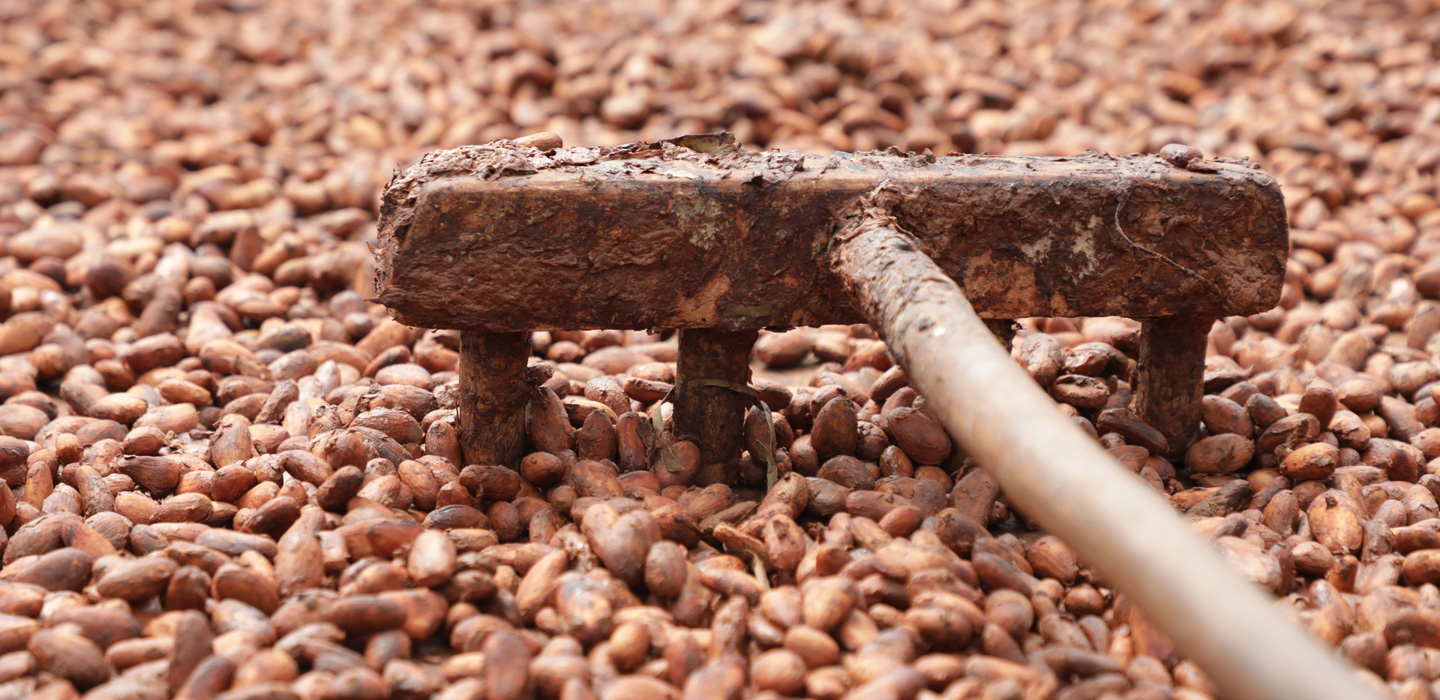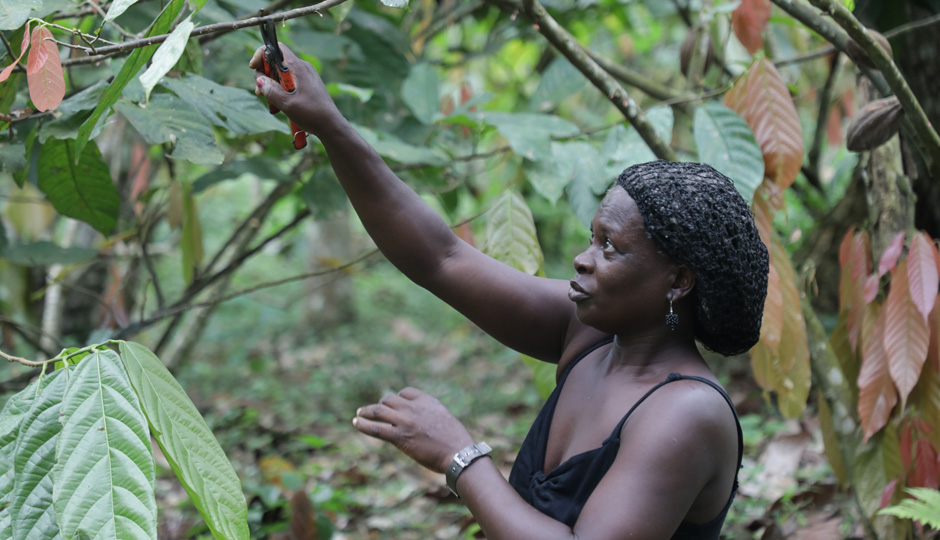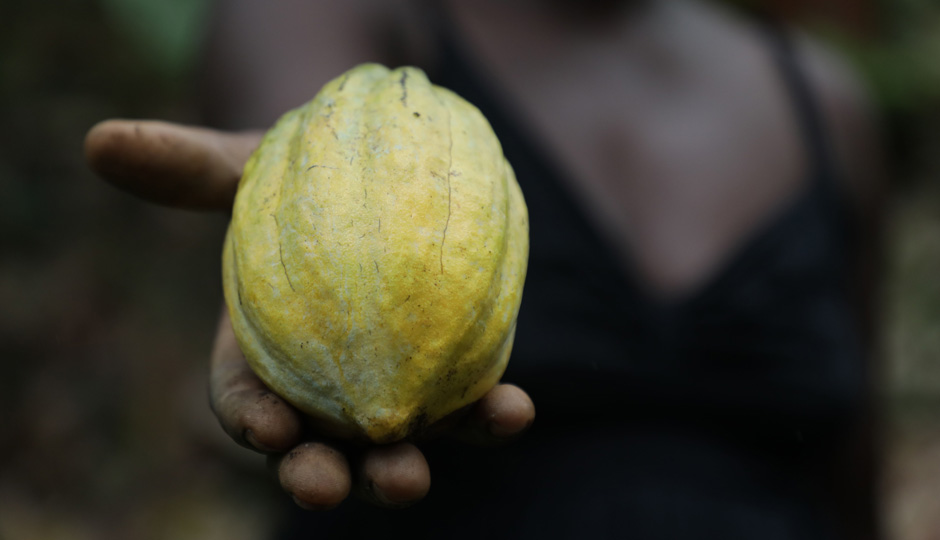Cacao: How just one crop has boosted an entire country’s exports
IFAD Asset Request Portlet
Asset Publisher
Cacao: How just one crop has boosted an entire country’s exports
Estimated reading time: 4 minutes
© IFAD/Barbara Gravelli
Today, cacao trees once again dot the landscape of Sao Tome and Principe. Once considered the world’s largest cacao exporter, this tiny island nation off the West African coast had significantly scaled back its operations after gaining independence in 1975. In the ensuing decades, repeated climate shocks (droughts and floods) conspired to keep the archipelago’s cacao production limited. But lately, cacao – the key ingredient in chocolate, and a major cash crop – is making a comeback in Sao Tome and Principe, thanks to IFAD’s assistance.
Going organic: Added value, new opportunities
For Sao Tome and Principe, the return to lucrative cacao farming was underpinned by a series of strategic decisions – key among them, the shift from conventional to organic cacao production. This transition has allowed them to add value to their core crop, resulting in a high-quality product that is increasingly in demand in international markets.
Meeting the strict guidelines for organic certification is no small feat, especially in a place like Sao Tome and Principe, a biodiversity-rich country covered in legally protected forests. But with the help of IFAD’s PAPAC and PAPAFPA projects, local smallholders were able to acquire the means and skills to redefine their production.
IFAD’s support came via two local cacao farming cooperatives, CECAB and CECAQ11, through which Sao Tomean farmers received training on how to transform their crop and implement sustainable practices. Today, the organic cacao is grown in the shade of existing trees, allowing farmers to avoid clearing vegetation and adding chemicals to the soil. Systematic quality control processes verify the characteristics of the cacao beans throughout their life cycle. Both cooperatives are now internationally certified as organic, as well as with meeting fair trade, social and environmental standards. The growing international demand for organic and fair-trade cacao and the widespread recognition of Sao Tomean products’ quality and sustainability have created attractive market conditions for both collectives.
 |
| © IFAD/Barbara Gravelli |
Building on these conditions, IFAD has brokered key partnerships between these cooperatives and European chocolate manufacturers. Through these connections, Sao Tomean cacao sellers have been able to directly negotiate contracts with major international sellers of fine chocolates. And because of the product’s organic and fair-trade status, the contracts must stipulate a minimum guaranteed price, thus minimizing losses to the farmers in case of commodity price shocks.
The establishment of these agreements has also ensured a sustainable revenue source for the smallholders who belong to these cooperatives, such as Delfim Fonseca, a 30-year-old cacao producer who became a member of CECAB 10 years ago. “Since I joined it, my revenues have grown and life has improved,” says Delfim.
|
CECAB members João and Fátima describe the benefits the collective has brought them. |
Beyond cacao: Far-reaching impacts
Cacao is by far the most important source of external-sale revenues for Sao Tome and Principe. In 2017, cacao bean exports reached US$9.5 million, equivalent to about 93 per cent of the country’s total exports and approximately 2.4 per cent of its gross domestic product. This represents a tripling of Sao Tome and Principe’s exports in comparison to just 12 years before, when IFAD first began its support of the local cacao sector.
In addition to helping CECAB and CECAQ11 transition to organic farming, IFAD’s support has contributed to increasing their overall yield production by 31 per cent and sales revenues by 34 per cent. In fact, roughly 40 per cent of the country’s entire foreign-traded cacao output now comes directly from these two collectives.
 |
| © IFAD/Barbara Gravelli |
These exports have guaranteed a solid level of sustainability for both cooperatives, improving the livelihoods of a significant number of people. Each cooperative is comprised of smaller associations that serve as semi-autonomous business hubs, collecting common funds to help members when needed, shortening the distances needed to transport goods and maintaining and strengthening the links between farmers and their communities. Each association can also count on the ongoing support of an agricultural technician trained by IFAD-supported projects.
The more than 3,300 farmers who have joined these cooperatives to date have gained larger and more stable incomes for their households, meaning that these cooperatives – and IFAD’s efforts to support them – have thus benefitted nearly 25 per cent of Sao Tome and Principe’s rural population.
Today, Sao Tome and Principe does not aim to compete in quantity with much larger cacao-producing countries; instead, the local cooperatives are investing in quality, a strategy that has given them a comparative advantage. Thanks to the value of their organic cacao beans, local smallholders have benefitted from higher returns and better-planned livelihoods. This cooperativism has also facilitated Sao Tomean farmers’ market access, making their business model a successful example of public-private-producer partnership.
Publication date: 18 February 2020